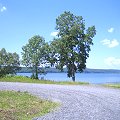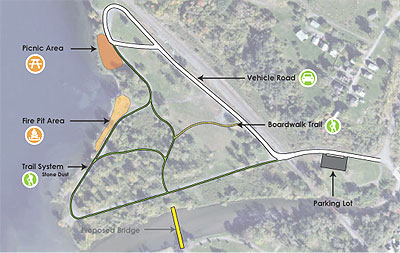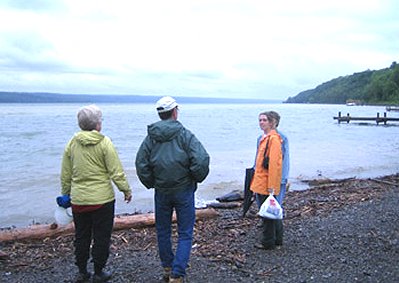- By Dan Veaner
- Around Town
 Print
Print  Five landscape architecture and planning students presented the Lansing Town Board with a plan for the next steps in developing Salt Point at last week's board meeting. The team developed a plan for using community input to develop physical trails and facilities, and define the kinds of recreation, activities, and educational elements it wants.
Five landscape architecture and planning students presented the Lansing Town Board with a plan for the next steps in developing Salt Point at last week's board meeting. The team developed a plan for using community input to develop physical trails and facilities, and define the kinds of recreation, activities, and educational elements it wants."We'll be asking the community how developed it wants this area to be," said sophomore John Scolere. "You have (recreation-based) Myers Park, and that's one approach. A combination of vehicular access and pedestrian trailways gives you access to the water, but still allows you to explore the natural area of Salt Point."
The Salt Point project is one of seven projects tackled this semester in Lansing, Binghamton, Clyde, Geneva, Owego, and Wade by Design Connect, a Cornell University student-run community design organization. The project team includes first year graduate student Katherine Li, senior Rachel Bland, juniors Hanna Beall and Heather Harris, and Scolere.
"Our project goal was to provide a plan that would revitalize Salt Point," Li explained. "We would create a design that would compliment Myers Park. Most of all our main objective is to come up with ideas for the community to get involved with and get excited about this project."
The Town of Lansing contracted with the New York State Department of Environmental Conservation (DEC) to manage Salt Point in 2006. At that time a management plan was drawn up that painted a picture of the site as a quiet, nature-driven companion to the more activity-driven Myers Park.
 Students proposed this tentative plan for Salt Point
Students proposed this tentative plan for Salt PointBland says that Salt Point is one of the only access points to Cayuga Lake that can be configured as a nature preserve, rather than recreation areas, with Montezuma National Forest being the one notable exception.
Salt Point was the site of the Cayuga Salt Company, which made table salt there from 1891 to 1962. It was then purchased by the DEC, which established a fish hatchery in the '70s, which operated for ten years. For the next 25 years the site was not used for anything official, and became a favorite hangout for illegal activities including substance abuse, underage drinking, illegal watercraft launching and swimming, and partying. While some residents used the area for walking and held annual cleanup days, it generally suffered from dumping, littering, and neglect. Most people referred to it as 'UC Point' after the popular Utica Club beer.
The Design Connect students listed a number of options the community could choose for access to the park, and kinds of recreation areas. Suggestions for recreation include a boat rack and dock, a boardwalk, and pathway surface treatments. Benches, a pavilion, picnic tables, and a fire pit are also options. A bridge connecting the two parks across Salmon Creek was proposed when the Town took over Salt Point's management. That is still on the table as well. They also recommended kiosks and signs for disseminating the park's history, and providing guides to native flora and fauna.

"They've done a great job," said Park Superintendent Steve Colt. "Honestly, this plan is quite doable. It's amazing how much it mirrored the master plan. That proves that when you look at that piece of property, that's what you see and it's what trained landscape architects see. They're going to give us the tools. I recommend we take advantage of what they give us."
The students proposed a plan that includes mailing pamphlets and disseminating information about community meetings and surveys to solidify a plan for the park. While their involvement ends with the end of the semester, they proposed creating tools the Town can use to involve the community in making decisions for Salt Point. They proposed to design posters and other materials, and create surveys to be used by the town to garner interest in the project.
"The area can really become something that is active and a central part of the community," Scolere said.
v7i16



